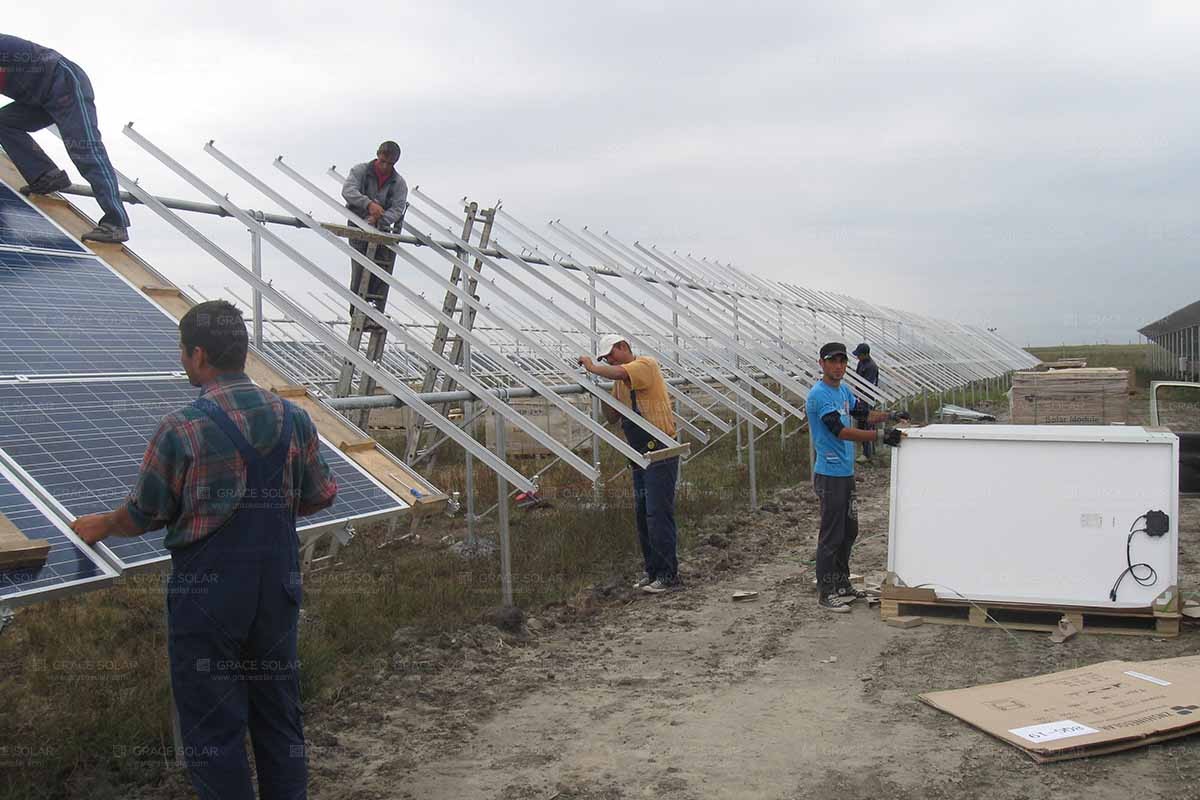Photovoltaic tracking system (another spring for photovoltaics)
Under the pressure of cheap Internet access, the domestic photovoltaic industry is doing its best to minimize electricity bills. Among them, innovative photovoltaic technology is one of the core ways to improve power generation efficiency.
Tracking technology allows photovoltaic panels to chase the sun like a sunflower
The design principle of the photovoltaic tracking bracket system is not complicated. Since the angle of the sun is always changing, traditional fixed photovoltaic panels are no longer "dead things" after using tracking technology. On the contrary, it can chase the sun like a sunflower, increasing the solar radiation received, thereby increasing the overall power generation of the power station.
According to the Energy Research Institute of the National Development and Reform Commission, "It is conservatively estimated that tracking technology can increase the power generation of photovoltaic power plants by 20% ~ 30%".
The traditional fixed photovoltaic panels have the lowest power generation efficiency, and the photovoltaic panels of single-axis and dual-axis brackets and auxiliary systems are indeed relatively high. The latter is the main application form of photovoltaic tracking technology.
"When it is difficult to increase the photoelectric conversion efficiency of photovoltaic modules by 0.1%, it is easy to increase the power generation capacity of the power station by using tracking technology. I have to say that this is a shortcut that is conducive to promoting photovoltaic parity on the Internet."
Tracking systems based on various supports can also bring some additional benefits to photovoltaic power plants.
“Many power stations are built in areas with relatively harsh environments. Strong wind, sand, and snow bring troubles to the operation and maintenance of the power station. With tracking technology, the photovoltaic panels can adjust the angle at any time, and the power station will no longer be vulnerable to disasters.
In addition, thanks to single and dual-axis supports, photovoltaic power plants with tracking systems can be more closely integrated with agricultural production, and can operate flexibly in ponds, mountains, and wasteland environments, which have advantages over traditional power plants.
What about the actual application of photovoltaic tracking technology that seems to have many advantages?
First, photovoltaic subsidies are facing downward pressure, and the “limit” for cheap Internet access is approaching. Power station developers are eager to reduce electricity costs and expand profit margins. Second, the “Front Runner” program has a significant pulling effect, which has a significant impact on high-quality enterprises in the photovoltaic industry chain. The advanced technology has formed a clustering effect.
Reducing production costs and improving reliability are the key. From the overall perspective, the day when the photovoltaic tracking technology becomes popular does not seem to be far away, but there are still deficiencies that need to be filled at this stage, otherwise the prospects will be greatly affected.
"Reliability is also a key issue." The scale of the domestic photovoltaic tracking market has not yet formed, which has something to do with developers' concerns about the reliability of tracking products. The tracking bracket system that appeared on the market before lacked reliability, and often had defects such as the misalignment of the motor and the controller, the failure of the rotating system, and the slippage of the bearing. This has had a bad effect, and many investors dare not try again. "
With the continuous improvement and maturity of the technology of outstanding manufacturers in the industry, the production cost of photovoltaic tracking products is continuously reduced, the reliability is continuously improved, and the probability of failure is greatly reduced compared with the previous period.
There is no doubt that photovoltaic power plant developers are very happy to use low-cost, high-reliability tracking systems. In the future, the domestic photovoltaic tracking industry needs to focus on contributing to the promotion of photovoltaic parity access.



.jpg)